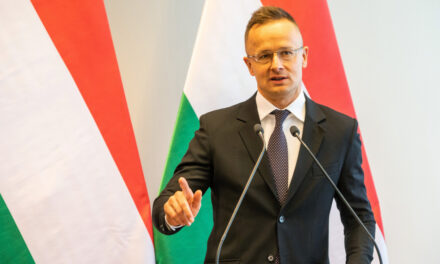We are just now making rounds on the EU, while the left is raging and ranting.
In connection with the second quarter GDP data released by the Central Statistical Office on Tuesday, most of the press began to rant again, envisioning a huge crisis, even though the growth of the Hungarian economy is double the EU average, and of the 14 member countries known so far, only Spain, Portugal and Lithuania had a greater improvement than ours.
Let's look at the facts!
This year, the CSO publishes the gross domestic product (GDP) data earlier than usual, on the 30th day after the end of the relevant period. Thus, we became one of the countries in the Union that can issue this first estimate at the earliest. More detailed and precise data will be available to us only on September 3, but we can already see the main trends from this early announcement. On the same day as the KSH, Eurostat also published the data for the 14 countries shown in the figure below.
We can see that among currently known countries, we had the 4th largest increase of 1.3%, if we examine the seasonally and calendar-adjusted value and compare it with the same period of the previous year. The average of the Union (0.7%) and the average of the Eurozone (0.6%) are half of the Hungarian dynamics.
The three largest economies of the EU, Germany, France and Italy, also developed at a much lower pace in both quarters this year than we did,
in fact, the GDP of the Germans even decreased compared to last year.
If we want to perform a short-term analysis, we usually compare the quarterly GDP data with the previous quarter. The Hungarian second quarter of this year stagnated compared to the first, according to the first estimate, the exact value decreased by -0.2%. Several opposition analysts tried to explain this as if the economic collapse was already here.
They forget that in the first quarter we grew by 0.7 compared to the last quarter of last year, so we can show an overall growth in the two quarters, even on a quarterly basis.
And if we compare our first half of this year with the first half of last year, we see a 1.5% increase, which is considered particularly good at the EU level.
So we can say that there is no crisis in our country, not even a small one, let alone a huge one, the clickbait headlines again have nothing to do with reality.
While we are waiting for the detailed GDP data, we can prove this statement with real economic data.
• real earnings have been increasing since September last year, and the rate of increase has been around or above 10% since December. The first quarter growth is the 5th largest among the 35 OECD countries, and if we measure it against the level at the end of 2019, it is the 2nd largest.
• the volume of retail sales in the first five months of the year increased by 3.3% compared to the same period of last year, and if we look only at food retail, there is an increase of 4.5%.
• the construction industry grew by 6.1% in the first five months compared to the level of the same period last year.
• in tourism, the number of guest nights in the first half of the year was 7.6% more than in the same period of the previous year.
• the housing market is improving, sales time is decreasing nationwide and housing prices are increasing.
Among the areas of GDP production, there is one significant one where growth has not yet started, this is industry, we saw a 2.4% decrease in the first five months of the year. This is mainly due to the decrease in foreign market sales. Here we cannot forget the fact that in our country there is a very high proportion of German-owned companies or companies linked to German companies or the German market,
which are strongly negatively affected by the not very rosy situation of the German economy.
However, it is also important to take into account the fact that the growth is much higher in parts of the world outside of Europe. For example, the latest GDP growth in the USA was 3.1%, which is five times that of the euro zone, and more than double that of Hungary. We do not yet have quarterly GDP data for Russia, but their annual growth in 2023 was 3.6%. China is counting on 5% for this year, and this is based on their 5.3% improvement in the first quarter. The Hungarian government also calculates 3.5% for next year, but
this definitely requires peace beyond our borders.
So to summarize: no, the Hungarian economy is not in crisis, but it produced one of the largest growths in the Union in the first half of this year. Although this growth is not considered outstanding in the world outside the EU, it is a fact that we do not need to sit back with satisfaction, but we should not exaggerate either. And if the entire economic community to which we belong declines or stagnates, then it is not worth blaming the government alone for our problems. Of course, this is understandable on the part of the opposition, but the expert who makes such a statement is certainly not objective, and we should not by any chance believe him to be independent.
The author is a labor market expert and a staff member of the Economy and Competitiveness Research Institute of the National Public Service University.
Featured image: MTI/Zoltán Balogh













